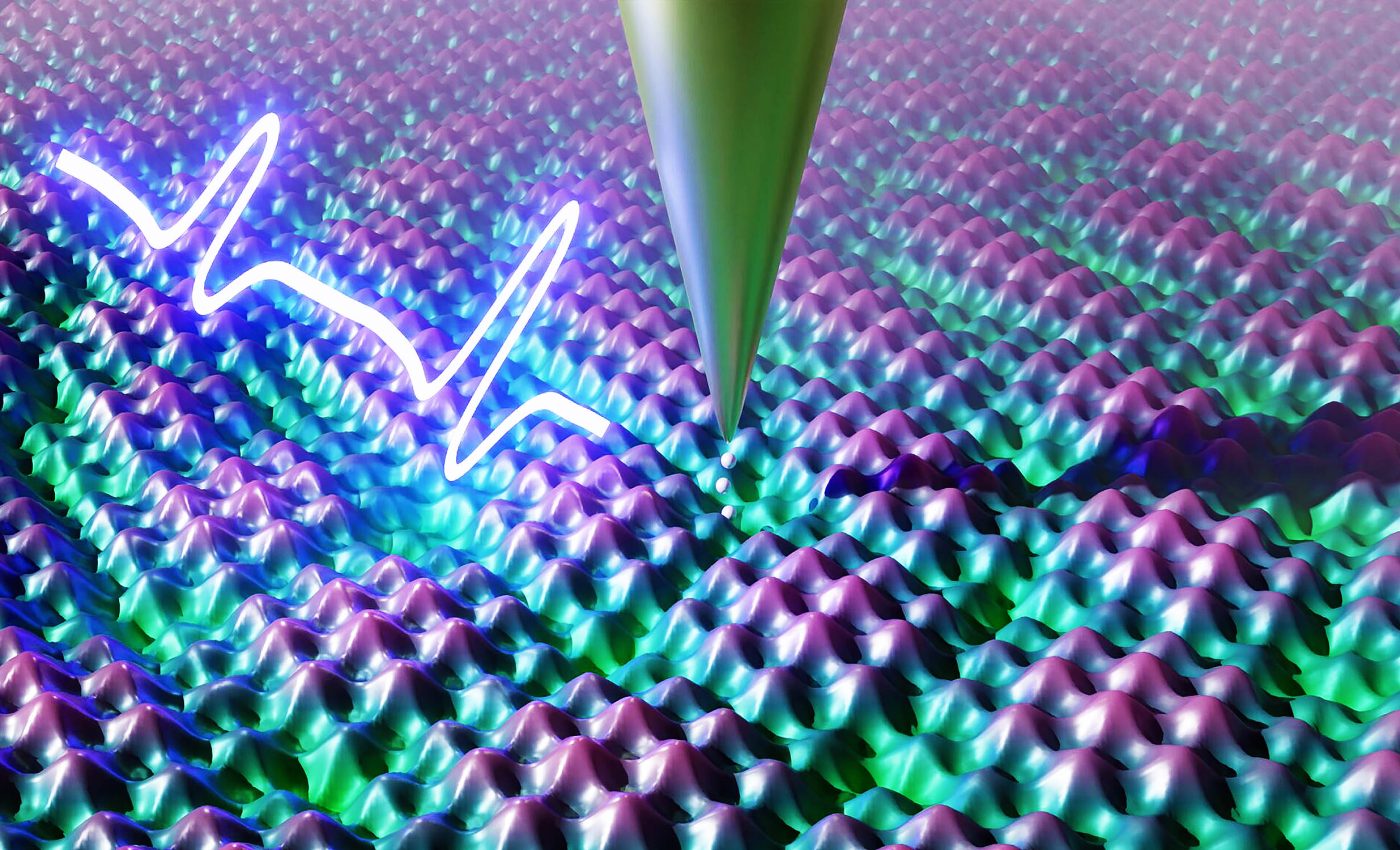
Electron movement seen at the atomic level with a quantum microscope
Imagine having the ability to peer into the very core of any material, observing electrons movement at the atomic level, and uncovering the complex behaviors that define their properties.
This is the extraordinary reality being shaped by a dedicated team of physicists that has pioneered a remarkable quantum microscopy method that extends the boundaries of scientific observation.
For the first time, this advanced technique enables scientists to capture electron movements with unparalleled spatial and temporal resolution, achieving detail at scales previously thought impossible.
By offering insights into electronic behaviors that were once elusive, researchers can now investigate new materials with customized properties.
This innovation paves the way for significant progress in fields such as electronics, energy storage, and many other applications.
New frontier in material science
The study was led by Professor Sebastian Loth, the Managing Director of the Institute for Functional Matter and Quantum Technologies (FMQ) at the University of Stuttgart.
“With the method we developed, we can make things visible that no one has seen before,” Loth explains. “This breakthrough could resolve long-standing questions about electron movement in solids, which have puzzled scientists since the 1980s.
Atomic-level changes in electron movement
In metals, insulators, and semiconductors, minor atomic-level alterations typically do not affect their macroscopic properties. For instance, metals continue to conduct electricity, while insulators remain non-conductive.
Yet, the realm of advanced materials — crafted exclusively in laboratories — reveals a different story. Here, even minimal atomic changes can usher in new macroscopic behaviors, such as transforming insulators into superconductors capable of conducting electricity without energy loss.
Remarkably, these transformations happen in the blink of an eye, within picoseconds — a trillionth of a second. To put this into perspective, a picosecond compared to a blink of an eye is like that blink compared to over 3,000 years.
Loth’s team has pioneered methods to observe these rapid atomic-level changes, shedding light on material behavior in ways that were previously unattainable.
Quantum microscopy is changing the game
The researchers examined a material made of niobium and selenium, delving into the collective motion of electrons within a charge density wave and the impact of a single impurity on this dynamic.
By applying an ultra-short electrical pulse, merely one picosecond in duration, they effectively pressed the charge density wave against the impurity.
This interaction induced nanometer-scale distortions within the electron collective, leading to intricate electron motion throughout the material.
This method builds on preliminary work conducted at the Max Planck Institute for Solid State Research (MPI FKF) in Stuttgart and the Max Planck Institute for the Structure and Dynamics of Matter (MPSD) in Hamburg, where Loth previously conducted research before joining the University of Stuttgart.
Material development and electron movement
Understanding how electron movement is stopped by impurities opens the door to developing materials with specific properties.
As Prof. Loth puts it, “If we can understand how the movement of the electron collective is stopped, then we can also develop materials with desired properties in a more targeted manner.”
This knowledge is crucial since no material is perfect and free from impurities. The new microscopy method helps scientists determine how impurities should be arranged to achieve desired technical effects.
“Design at the atomic level has a direct impact on the macroscopic properties of the material,” Loth adds. This discovery could pave the way for ultra-fast switching materials in future sensors or electronic components, enhancing their performance and efficiency.
Technology behind quantum microscopy
Traditional methods for visualizing individual atoms or their movements either offer high spatial resolution or high temporal resolution, but not both.
The new quantum microscope developed in Stuttgart combines a scanning tunneling microscope, which resolves materials at the atomic level, with an ultrafast spectroscopy method known as pump-probe spectroscopy. This combination allows for simultaneous high spatial and temporal resolution.
To achieve accurate measurements, the laboratory setup must be extremely well shielded. Vibrations, noise, air movement, and fluctuations in room temperature and humidity can all interfere with the delicate signals being measured.
“This is because we measure extremely weak signals that are otherwise easily lost in the background noise,” Loth points out.
Additionally, the team repeats these measurements many times to obtain meaningful results. Their microscope is optimized to repeat the experiment 41 million times per second, achieving particularly high signal quality.
“Only we have managed to do this so far,” Loth proudly notes.
Material science implications
The implications of this development are vast. The ability to observe and understand electron behavior at such a granular level means scientists can design materials with unprecedented precision.
This could lead to advancements in various fields, from electronics to energy storage, and beyond.
By understanding how atomic-level changes affect macroscopic properties, researchers can create materials tailored to specific applications, revolutionizing industries reliant on material performance.
Electron movement and future technology
The work of Prof. Loth and his team at the University of Stuttgart marks a significant advancement in material science.
Their innovative quantum microscopy technique not only paves the way for new research opportunities but also holds the promise of transformative practical applications in technology.
This breakthrough serves as a prime example of how cutting-edge research can propel progress, providing solutions to longstanding challenges.
With every new insight, are we not moving closer to a future where materials are meticulously designed, unlocking capabilities that once appeared to belong solely to the realm of science fiction?
As we delve into the tiniest scales of matter, the possibilities for discovery and innovation are truly limitless. Prof. Loth and his team have illuminated a path toward this promising future, one picosecond at a time.
The full study was published in the journal Nature Physics.
—–
Like what you read? Subscribe to our newsletter for engaging articles, exclusive content, and the latest updates.
Check us out on EarthSnap, a free app brought to you by Eric Ralls and Earth.com.
—–













